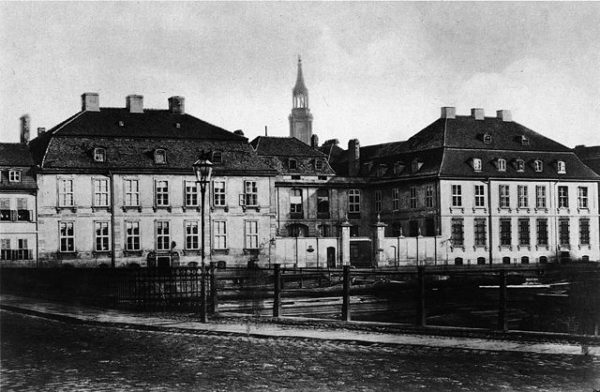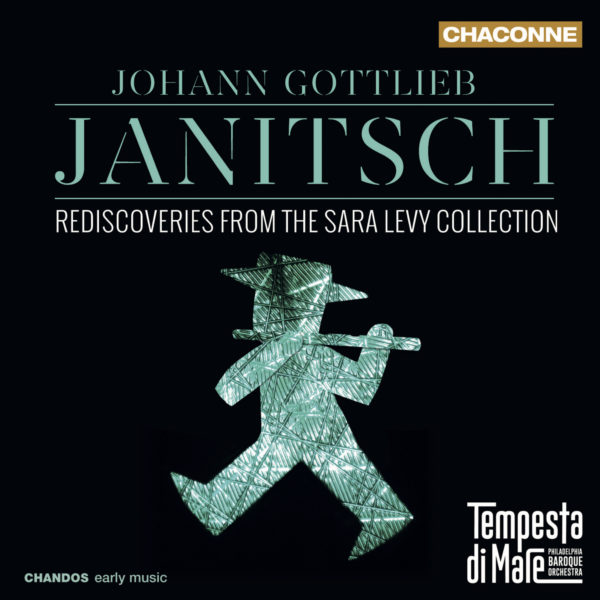“Wonderful things!” Practically dumbstruck, that’s all archaeologist Howard Carter could say at his first sight of the treasures in Tutankhamen’s tomb, glittering in their long-time hiding place.

“It felt like that for me, too,” says Richard Stone, Tempesta di Mare Artistic Co-Director, describing his feelings on opening the first box of Janitsch manuscripts in Berlin this summer, in preparation for the upcoming show, Rescued by the Red Army: rediscovering Johann Gottlieb Janitsch.

Stone was in Berlin with the help of a research grant from the Pew Charitable Trusts’ Philadelphia Music Project for his first look an amazing trove of seventeenth- to nineteenth-century German music, the Sing-Akademie archive, much of it collected by Berlin socialite Sara Itzig. The collection is newly rediscovered after the Soviet Army removed it from Germany in 1945 and hid it in Ukraine until the late 1990’s.
Removed. Displaced. Or looted, depending on your point of view. Stalin considered it to be claiming the rightful spoils of victory. The Yalta Conference in February 1945 gave the Soviets the opportunity—or the excuse—to extract compensation for the terrible damage inflicted by the Nazis on the Soviet Union. Stalin sent “trophy brigades” to Germany to search for valuables and remove them to the USSR. Countless works of art, books, archives and artifacts were shipped out by the trainload: 450,000 freight cars in all, according to estimates.
The war booty went east only to disappear. By treating their trophies like state secrets and burying both the objects and their records in high-security classifications, the Soviets kept them essentially invisible inside and outside the Soviet Union. Unknown amounts of treasure remain unaccounted for to this day. We now know that for 50 years the 5,000 incalculably valuable musical items that comprised the Sing-Akademie collection lay forgotten in Kiev.
The Soviets may well have rescued the manuscripts from damage. They housed them in high-quality boxes, safe from war, further plunder, or even careless handling. But five hundred original scores from the Bach family archives, 200 complete Telemann cantatas and a huge selection of other work by the great composers of the Prussian court as well as Handel, Mozart, Haydn, and even Beethoven were lost to musicians, scholars, and audiences for generations.
In the 1990’s, however, little stashes of treasure began popping up as an unexpected dividend of the Soviet Union’s collapse. For example, a group of some 75 French impressionist and post-impressionist paintings looted from private German collectors, including Degas’s wonderful Place de la Concorde, suddenly reemerged and went on display as Hidden Treasures with much fanfare at St. Petersburg’s Hermitage Museum in 1995.
The secrecy around the Sing-Akademie archive began to unravel at the same time. A group of researchers, including Ukrainians and Harvard University scholars, began to follow a scant trail of clues, including reprints of obscure old reports and chance conversations at the right time with the right people. The happy ending came in 1999 when they found the beautifully-preserved stacks and stacks of honest-to-goodness treasure, the Sing-Akademie collection, on the shelves of the Central State Archive-Museum of Literature and Art of the Ukrainian SSR.
The collection was greeted with excitement and acclaim when it returned to Germany in 2001, where it is on deposit at the Staatsbibliothek in Berlin. “This is the most significant restitution from anywhere in the Soviet Union since German reunification,” writes Patricia Kennedy Grimsted, of the Harvard Ukrainian Research Institute. “A major segment of the German musical heritage has at last come home from the war.”
The massive job of identifying, cataloguing, and making such an enormous and important collection of music available to the world has only just begun, however. Tempesta di Mare is extremely privileged to be among the first to bring its glistening, golden treasures back to life.
[This blogpost was originally published in 2008, when Tempesta di Mare performed the modern premiere of one of the pieces on this new recording (2018 release) on Chandos Records]

NEW Chandos Release:
Janitsch: Rediscoveries from the Sara Levy Collection
_______________________
Anne Schuster Hunter is a writer, writing teacher and art historian living in Philadelphia.
She teaches a course in creative writing at Temple University Center City.
